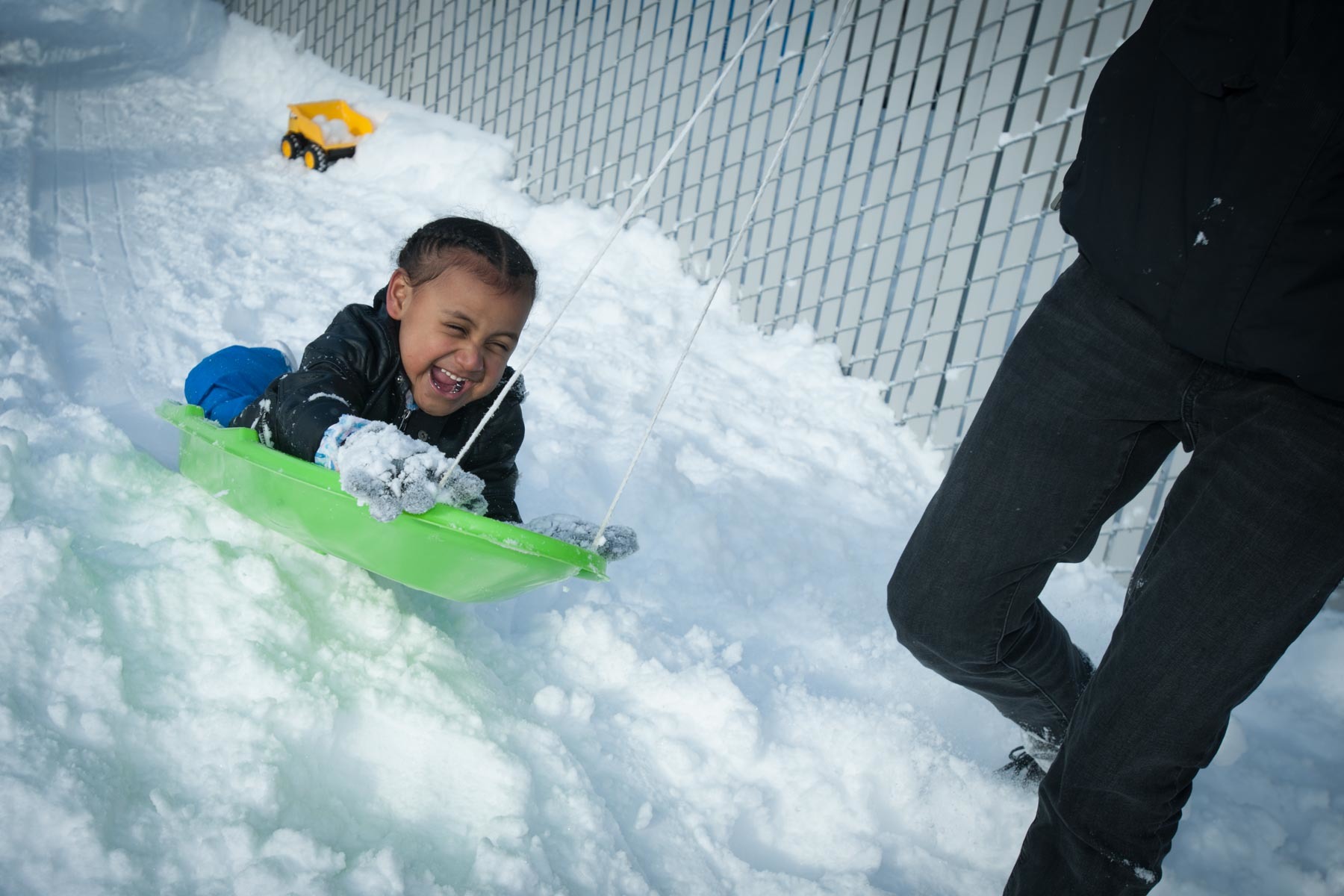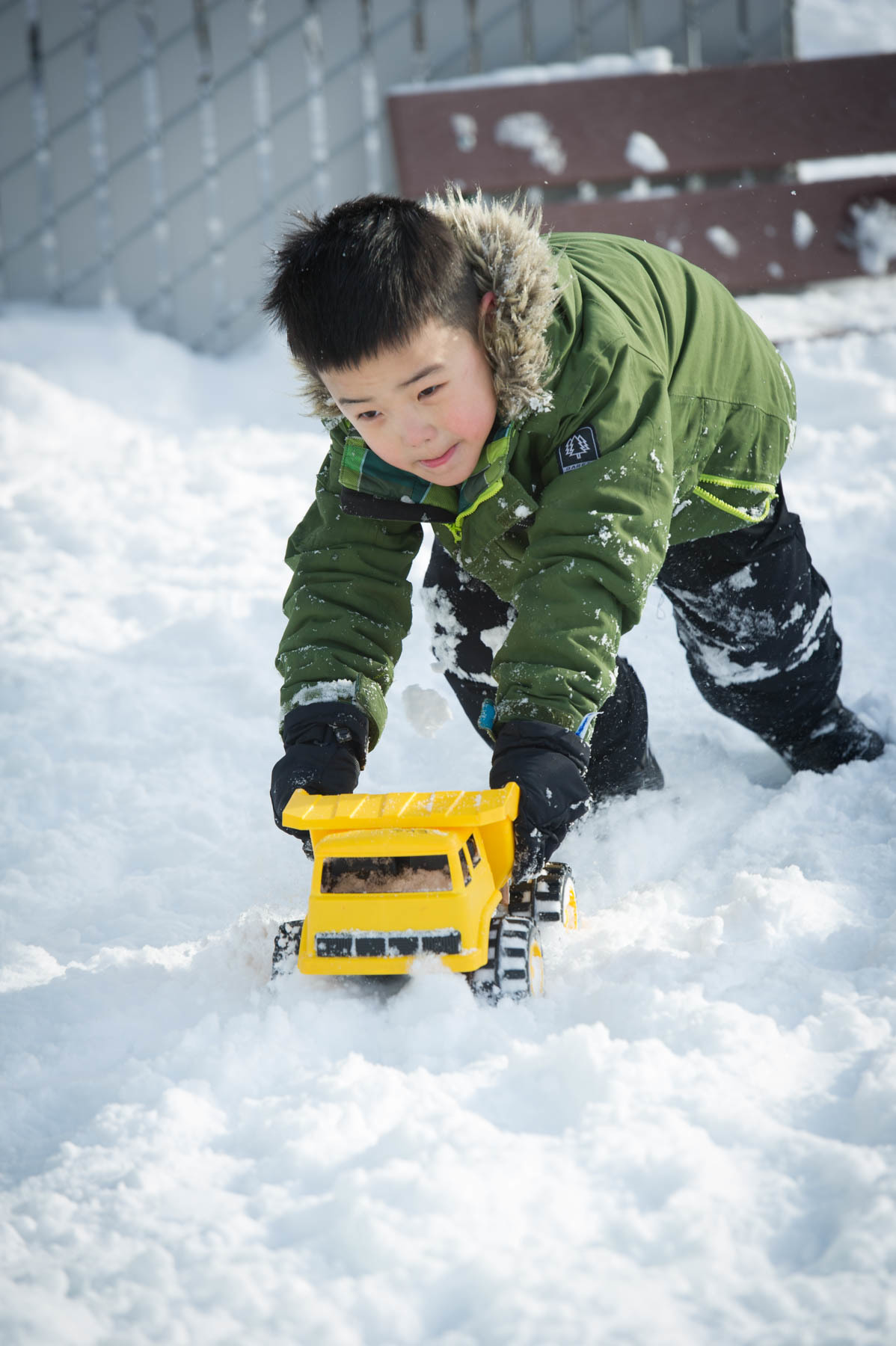Little equipment needed to keep your preschoolers active this winter / Play Every Day blog update
Alaska Department of Health sent this bulletin at 01/13/2021 01:47 PM AKSTLittle equipment needed to keep your preschoolers active this winter
JANUARY 13, 2021 — When you’re 30, there’s a lot of gear you could grab to stay active outdoors during the winter. Maybe it’s skis, trekking poles or snowshoes.
But what about when you’re 3? Staying active throughout the coldest, darkest months — especially this winter — is important for the youngest of children. Families and experts are finding ways to keep preschool-age kids moving with some of the simplest, low-cost ideas that are still possible during the pandemic.
Korynn and Ken Applegate of Anchorage are parents of five kids. They’ve had plenty of experience keeping preschoolers active. The Applegates stock a big plastic tub outside year-round with many options. Their five kids find all kinds of toys in that tub, including balls, hand-me-down hockey sticks, pucks, Frisbees and items that may suggest summertime play, but that doesn’t limit their use in the winter. Inside that tub, the kids find gardening tools they can use to dig, sculpt and carry snow from one place to another.
Alaska communities also offer winter sports programs for kids as young as ages 3–6. Learn-to-skate programs in Alaska may start with 3- to 4-year-olds. The Junior Nordic cross country ski program in Anchorage starts with 6-year-olds.
“We started our kids young with local learn-to-skate programs,” said Korynn Applegate. “The age they started depended on the child, but most were 5 years old. Except one of the boys. We started him skating at 3 because he was totally obsessed with hockey. He slept with a hockey stick.”
Applegate said she’s found that keeping her kids active “helps keep the depression bug away, especially when it starts getting dark.” Dr. Diane Craft agrees. Craft is a national expert on early childhood physical activity and the author of “Active Play! Fun Physical Activities for Young Children.” Vigorous activity for children is important for many reasons, including helping kids sleep better at naptime and at night, Craft said.
“Physical activity can be a great stress reducer — for both young children and their family,” Craft said. “With the added stress of the COVID-19 virus, actively playing and laughing together may be just what we all need.”
How much physical activity should a preschooler get each day?
Parents often say that their preschooler never stops moving. That’s likely true for most 3- to 5-year-olds. The National Physical Activity Guidelines for Americans recommend kids ages 3–5 stay physically active throughout the day, with a target of three hours of physical activity per day. That should include a mix of light, moderate and vigorous activity.
Parents, teachers and caregivers of preschoolers can encourage active play that includes a variety of movements. Activities, such as hopping, skipping, jumping, and tumbling, can help build strong bones and muscles. Kids need adults to help them learn how to use their muscles and move their bodies. Learning how to throw and kick a ball, or how to skate or ski, helps kids develop skills that can strengthen their bodies and improve coordination.
“It’s important to remember that physical activity for young children is about having fun while learning to move their bodies. It is NOT about competition,” Craft said.
Craft also stressed the importance of adults as good role models for young kids.
“Be active yourself to show young children how important physical activity is for you – and for them,” Craft said.
“Having fun with children while being active can help them develop a lifelong enjoyment of physical activity.”
When possible, take activity outside this winter
Heading outdoors can add creativity and invention to activities. Applegate says her kids are always making up new games when they’re playing outside.
“They even make up new words for their games,” Applegate said.

Find ways to turn everyday winter activities into something more. After shoveling the driveway, use that shovel to create a snow maze in the yard. Challenge kids to run, hop or skip through the maze without stepping over the walls. Make it even more magical by creating ice luminaries with your children and using them to brighten the twists and turns of the maze.
Alaska’s gift is space to move, with hundreds of parks and miles of trails. Many of these are great places for families with young children to walk, climb or just play. The Anchorage Park Foundation has maps for many of the parks and trails in Anchorage. Families living outside of Anchorage can find parks, trail maps and updates throughout the state on the Alaska Division of Parks and Outdoor Recreation website and using apps like OuterSpatial.
Meredith Gutierrez, Youth Engagement Coordinator for the Anchorage Park Foundation, said the Schools on Trails program encourages everyone to go outside, but especially those with small children.
“Being outdoors for just a few minutes a day benefits children’s physical, mental, and emotional health,” Gutierrez said. “Give your kids the room to explore, move, and make noise. What games can they imagine? What animals do they think wander through your space? What is something big or small they notice?”
When playing outdoors, be sure to provide young kids with the appropriate clothing for staying warm and dry. Kids should be dressed in layers and have their hands, feet, ears, and heads covered. They also should have periodic breaks to warm up inside. Physical activity doesn’t have to take place all at once. Kids benefit from physical activity broken up into short bursts. When it’s colder, kids can play outdoors for several shorter periods throughout the day. Be mindful of your preschoolers' limits and needs, such as extra clothing, water, and snacks, when heading out for hikes and longer activities.
Staying active when you can’t get outside
There are lots of indoor activities to help young kids move their bodies when it’s too cold or stormy to go outside. Check out these 25 ways to get moving at home from the American Heart Association.
Dr. Craft shared this idea: “Separate several pairs of socks. Scatter one of each pair at one end of an open space and scatter their mates at the other end of the space. Challenge children to each pick up one sock, run down to the other end, and look among all the socks to find the exact match to the one in their hand. Run back with the matched socks to the starting point and repeat until all the socks have been reunited with their exact match. Vary the movement – run, jump, hop, and tiptoe from one end to the other, finding the mates for each sock.”
Other indoor activities include games that require movement, such as charades, Follow the Leader, Simon Says and Twister. Do impressions of your favorite animals or act out the scenes from a book. Dancing to music also helps kids, and adults, have fun while moving their bodies. There are many free and low-cost videos and apps that are specifically made to get young kids moving. Go Noodle videos have catchy, clever songs and movements for kids of all ages.
Families also can find ways to use spaces and household items in different ways to encourage movement. The Applegates set up obstacle courses in their garage. This is a great way to teach kids how to go over, under, and around objects. The younger kids like to ride their tricycles or pedal cars in the garage, too.
Play safely near others this winter
Better treatments and COVID-19 vaccines are becoming available in Alaska, but it’s still important to play safely during the pandemic. When playing near kids outside your family’s social bubble, outside interactions are best. Stay six feet away from others and wear masks, even outside. Clean and disinfect frequently touched surfaces and wash or sanitize hands frequently. Parents should carefully consider using playgrounds. Social distancing is difficult at playgrounds, making spread of the virus possible. There are so many outdoor places to visit across the state, though, giving families with little children a lot of options to get out and play.
Sign up to receive announcements for updates to Play Every Day's blog and website.
Play Every Day is a campaign with the Alaska Department of Health and Social Services to help Alaska children grow up at a healthy weight and encourage families to be physically active and choose healthy drinks. For more information, visit www.playeveryday.alaska.gov.


